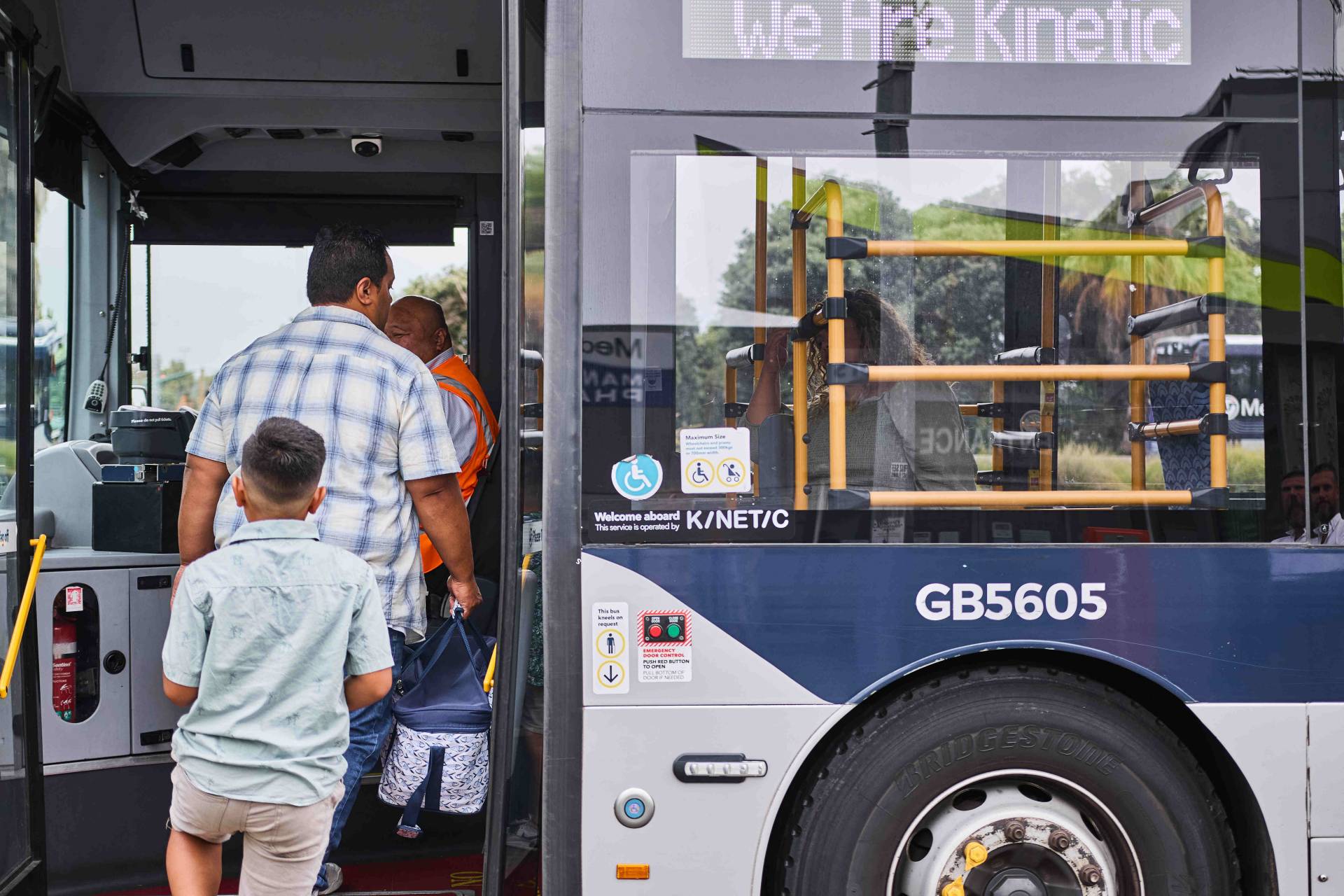Greener journeys just got easier for Northcote staff and customers with the installation of a live bus tracker at Ngāhuripoke.
With 85 homes and a Kāinga Ora office, the three-block Ngāhuripoke development was the perfect place for a live Passenger Information Display (PID). This shows customers and staff real-time departures for nearby Auckland Transport (AT) buses, making it easier to plan journeys and get where they need to go.
Working with the local team, Kāinga Ora Principal Urban Designer George Weeks led the project in an effort to better connect Northcote and reduce its reliance on cars.
“The aim is to make public transport and active modes truly viable as part of a cohesive community,” George says.
“To achieve this aim, information on public transport is vital.”
George says the PID was part of a “complete package” offered to Ngāhuripoke social housing customers, to make public transport easier to use.
In partnership with AT, Kāinga Ora gave customers Northcote-specific bus and cycling maps, and personalised journey planning to get familiar with the area. Every new resident was also given a HOP card with two weeks’ free travel.
“This project shows the true value of partnership,” George says.
Pete Moth, AT Head of Public Transport Services Planning & Development, says he was “delighted” to see Kāinga Ora improving public transport accessibility for social housing customers under Northcote Development.
“This complements the forthcoming upgrade of the 942 bus to the frequent 94 and will open up public transport to many more customers,” Pete says.
“We look forward to supporting further use of PIDs in Kāinga Ora developments and elsewhere.”
Installing the PID cost about 15 percent of the price to build a single car parking space, George says, and highlights the value of sustainable transport options for people.
“It also supports wider Kāinga Ora aims around transport, health and liveability,” he says.
“We’ll be monitoring the success of the PID and are already looking for other places to install them, including higher-density developments with good public transport.”